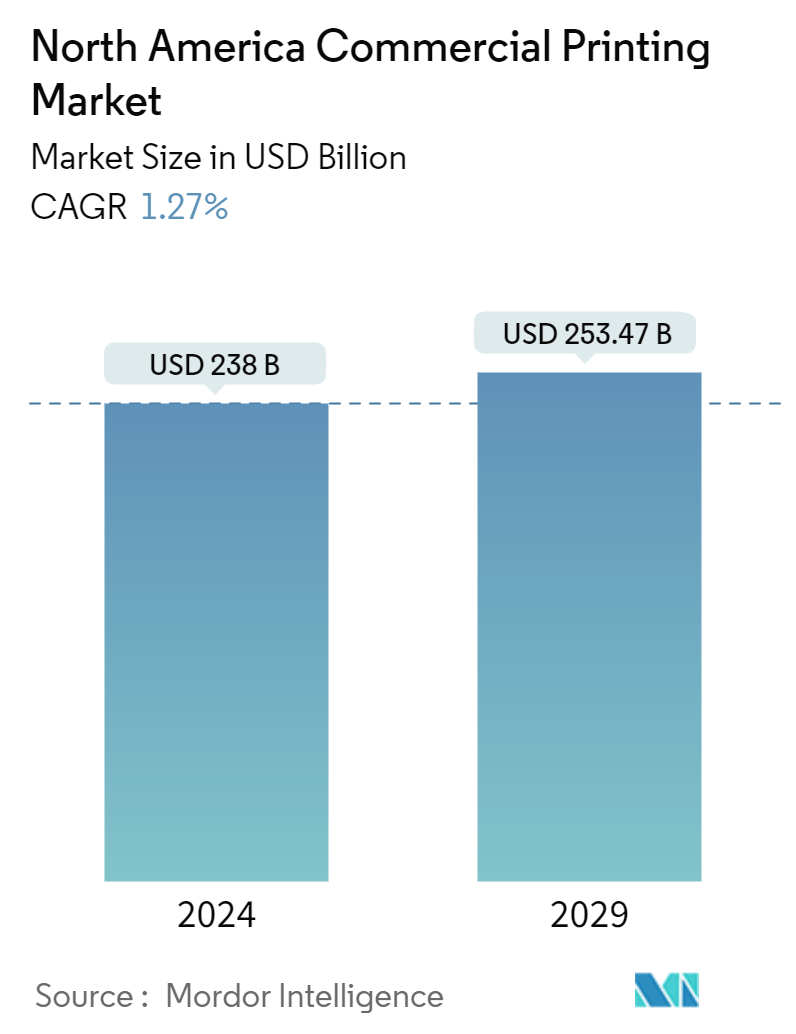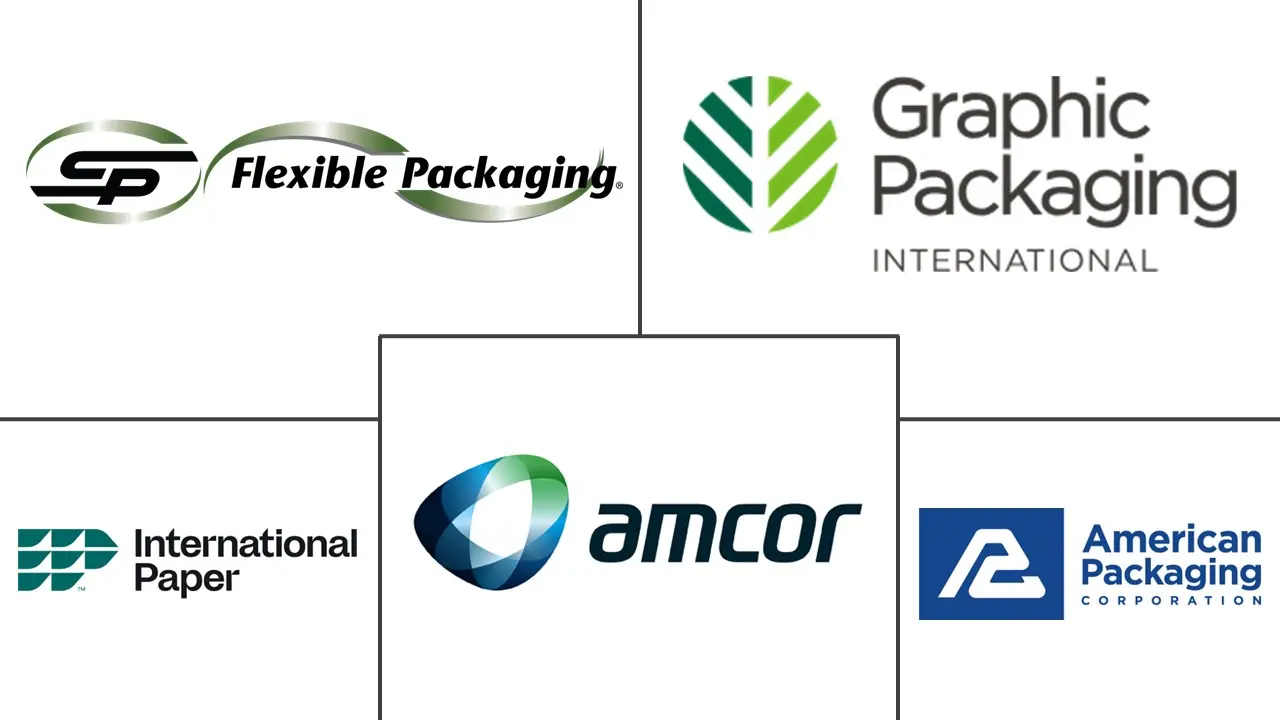Market Size of North America Commercial Printing Industry

| Study Period | 2019 - 2029 |
| Base Year For Estimation | 2023 |
| Forecast Data Period | 2024 - 2029 |
| Market Size (2024) | USD 238 Billion |
| Market Size (2029) | USD 253.47 Billion |
| CAGR (2024 - 2029) | 1.27 % |
| Market Concentration | Low |
Major Players
*Disclaimer: Major Players sorted in no particular order |
North America Commercial Printing Market Analysis
The North America Commercial Printing Market size is estimated at USD 238 billion in 2024, and is expected to reach USD 253.47 billion by 2029, at a CAGR of 1.27% during the forecast period (2024-2029).
The printing industry is undergoing technological advancements that are reshaping the printing market. Companies in the sector are innovating technical solutions to cater to consumer demands and bolster their market positions.
- The printing industry thrives on the demand for speed and efficiency. As a result, advancements in this printing method have opened expansive opportunities for ink and other component suppliers. The surge in printing on packaging, particularly in the food and consumer goods sectors, has spurred the growth of the market.
- The printing market's expansion is fueled by the swift ascent of digital print technology, which has refined label printing and boosted the adoption of digital labels. Their adaptability, versatility, and superior graphic standards drive this growth.
- In North America, economic growth fuels the demand for printed materials in the advertising, packaging, and publishing sectors. As retail, manufacturing, and real estate industries expand, the need for printing services intensifies.
- The boom in e-commerce largely drives the rising demand for flexible packaging solutions. In the printing market, packaging printing, encompassing labels, boxes, wraps, and films, is a primary growth segment.
- Raw material prices, including paper and ink, directly influence the profitability of the printing industry. Paper costs, a significant portion of printing expenses, have seen volatility from supply chain disruptions, trade tariffs, and a surge in demand for sustainable products. Ink prices, particularly for petroleum-based solvents, fluctuate in tandem with rising oil prices.

